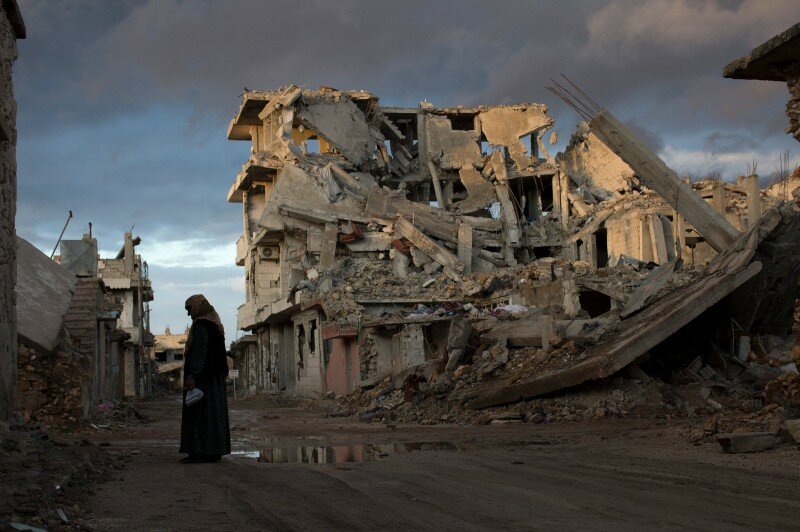
Afghanistan and Syria’s role in geopolitics
Welcome to World War III, where superpowers can have their cake and eat it too.
There is often talk of World War III in hypothetical terms. A world is painted in a doomsday scenario where the mightiest militaries on earth are facing off against each other. Using some of the most lethal weapons ever known to man, they rain down death and destruction, reducing whole cities to mere rubble within minutes. Such scenarios are often dismissed as fantasy. It would never happen, posture some, because both sides would suffer such immense harm that the potential gains from winning the war would not be worth it — a principle known as Mutually Assured Destruction.
But the superpowers of today have cracked the code. By fighting their wars on foreign battlegrounds, they can advance their geopolitical goals without the accompanying threat of destruction. Mutually Assured Destruction is still not being avoided, it is simply being redirected. So, for example, the United States and Russia can still confront each other in Syria, knowing full well that it will lead to Mutually Assured Destruction, not of their own countries — but of Syria and its people. Welcome to World War III, where superpowers can have their cake and eat it too.
The comparison of the contemporary global order to a world war may seem like a stretch to some, but the evidence of it is borne through the numbers involved. Every minute 20 people are forcibly displaced. Together, they add up to 66 million people around the world who have been forced to flee from their homes, which is the largest level of displacement ever recorded. For comparison, World War II resulted in the forcible displacement of 60 million people. Additionally, the world today has 10 million stateless people, i.e. people who have been denied the right to even possess a nationality.
Yet the gravity of the situation is not the only reason this is a World War. Google defines a “world war” as “a war involving many large nations in all different parts of the world”. So does the current situation compare to a World War? Does it truly involve ‘many large nations in all different parts of the world’? To answer this question, one has to look no further than Afghanistan and Syria, two countries with the largest population of refugees in the world.
Since 2001, Afghanistan has been under US occupation. Their mission has been backed by NATO troops from an array of countries — from predictable ones such as France (3935 troops) and the UK (9500 troops) to some more surprising ones like Poland (2560 troops) and South Korea (426 troops). Even Tonga managed to pitch in 55 troops! All told, 49 countries have fought on the side of the NATO mission in Afghanistan. However, their opponents too have allies. The Taliban has received aid from the Gulf as well as their ‘rivals’ Iran. The United States has also accused Russia and Pakistan of helping the opposition at various points, while Pakistan in turn, has accused India of meddling in Afghanistan. Who is right or wrong in their intervention in Afghanistan is a debatable point. What is not contestable however is that all the major nations of the world are involved, each with their own interests in the conflict.
The same is the case in Syria where Russia and Iran have both sent troops to support the Assad regime. The US, UK and France meanwhile are launching airstrikes and backing opposition to Assad in a determined effort to counteract Russia. Israel is intervening against Assad — but its main concern is its arch-rival Iran gaining influence in the region. Turkey too is against Assad but its preference is to support its own opposition and in fact its primary focus has been on crushing the Kurds — who are actually fighting against the regime. And lest they are forgotten, the wealthy Gulf has for a while now been funding its own opposition to the Syrian regime.
Morality aside, no party is willing to disengage from the conflicts because doing so would “jeopardise” their geopolitical agenda. And so it continues — the mightiest militaries on earth face off against each other, using some of the most lethal weapons ever known to man, raining down death and destruction, and reducing whole cities to mere rubble within minutes. This is the face of war in the 21st century. This is World War III. Just because it’s not quite what you imagined doesn’t mean it’s not happening.



